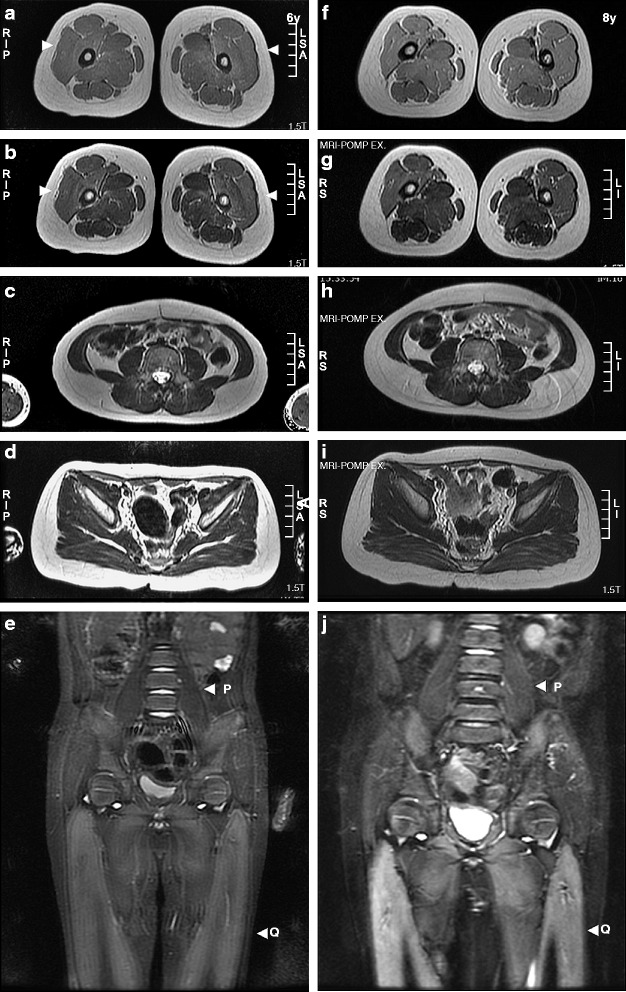Fig. 3.

Sequential MRI studies in neonatally treated patients with IOPD. (a) Imaging of NBS4 was performed at 6 (left panel) and 8 years (right panel) of age. Changes were most severe in the thigh muscles (arrowheads), followed by the trunk and pelvic muscles. STIR revealed the rapid progression of hyperintensity over the quadriceps muscles. (a, f) Thigh T1WIs, (b, g) thigh T2WIs, (c, h) trunk T2WIs, (d, i) pelvic T2WIs, and (e, j) coronal STIR images. Q: quadriceps muscles; P: psoas muscles. (b) Similar thigh T2WI changes in patients examined at 5 (a–c) and 8 years (d–f) of age. T2WI signal changes and muscle atrophy were prominent, particularly over the quadriceps muscles in the IOPD patients but not in the LOPD patients who were administered rhGAA therapy: (a, d) NBS2, (b, e) NBS3, and (c, f) NBSL2. (c) Variable degrees of thigh T2WI changes in patients examined at 3 (a–c) and 5 years (d–f) of age. T2 signal changes over the quadriceps muscles and increased intramuscular fat were prominent the IOPD patients but not in the LOPD patients who were administered rhGAA therapy: (a, d) NBS5, (b, e) NBS6, and (c, f) NBSL6
